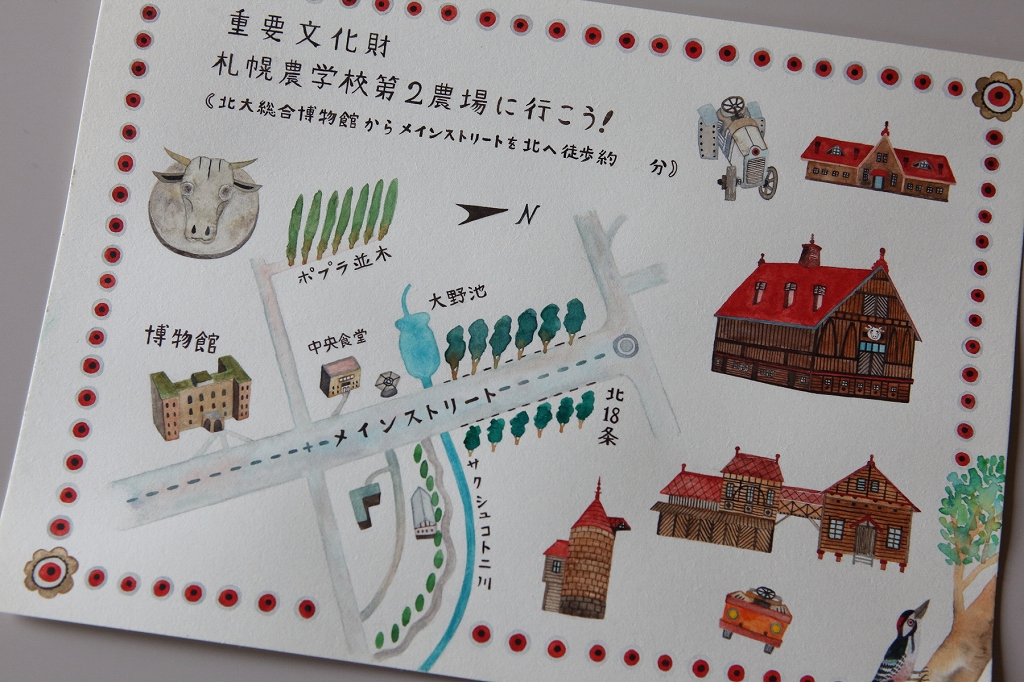
The map is printed at B5 size based on this original artwork.

The map is printed at B5 size based on this original artwork.
A prominently handwritten message captures the reader’s attention: “Let’s visit Sapporo Agricultural College Farm No. 2!” The map shows the path from the Hokkaido University Museum to the No. 2 Farm. Following the map, which was drawn by Mr Honda Seiji, seems to draw the reader into a world of mystery.
In addition to two-dimensional artwork, Mr Honda also creates three-dimensional works such as objects d’art. He is known for his rather unconventional, visionary style.
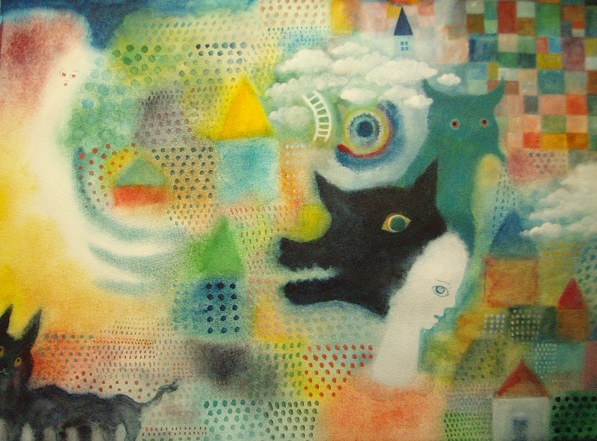
‘Niji no Ana’ (Hole in the Rainbow)
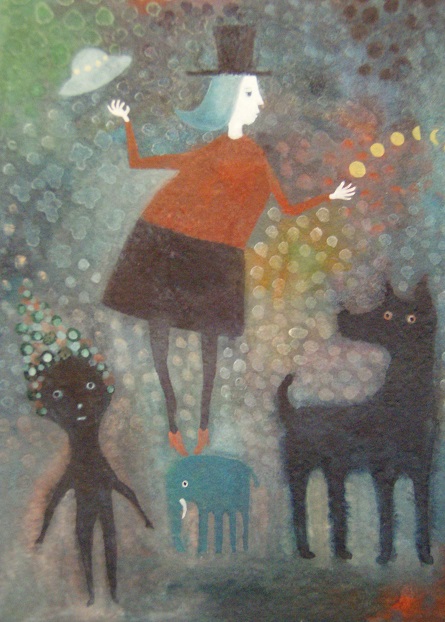
‘Tsuki-nage-bito’ (Person Throwing the Moon)

His three-dimensional works are all individual pieces
While it may seem contrary to the common expectation of a map to accurately depict the location of actual roads and buildings, Professor Yamashita and Ms Sasaki specifically sought such a design. According to Mr Honda, “They requested a hand-drawn treasure map.” Its visual style compels visitors to start walking. This guide allows each visitor to discover their own unique world.
Mr Honda spared no effort on fine detail. “I set out to capture the feeling of the wooden structure of the buildings of No. 2 Farm, and the particular details of the wood sculpture of a cow’s face on the model barn.” Even fine cracks on the decorative cow’s head, dating back to the construction in 1887, are faithfully represented.
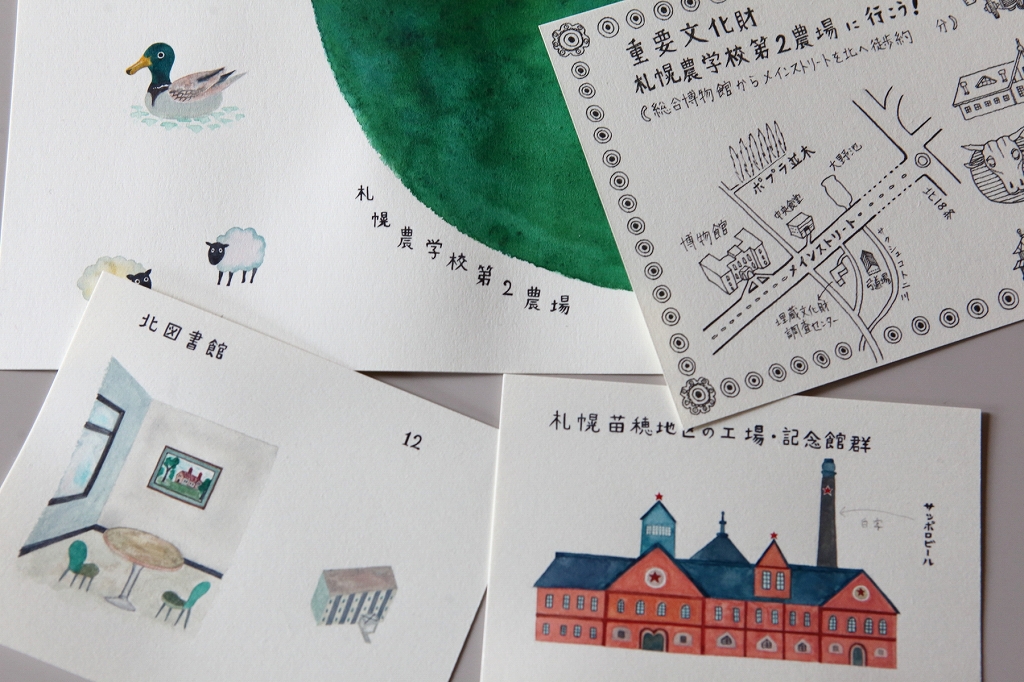
Parts drawn by Mr Honda are laid out by Ms Sasaki
This map is a work of art -- a collage which bridges imaginary and real worlds. It connects the Museum and the No. 2 Farm, and teaches us a new way to enjoy the Museum and No. 2 Farm by walking between them as a single experience.
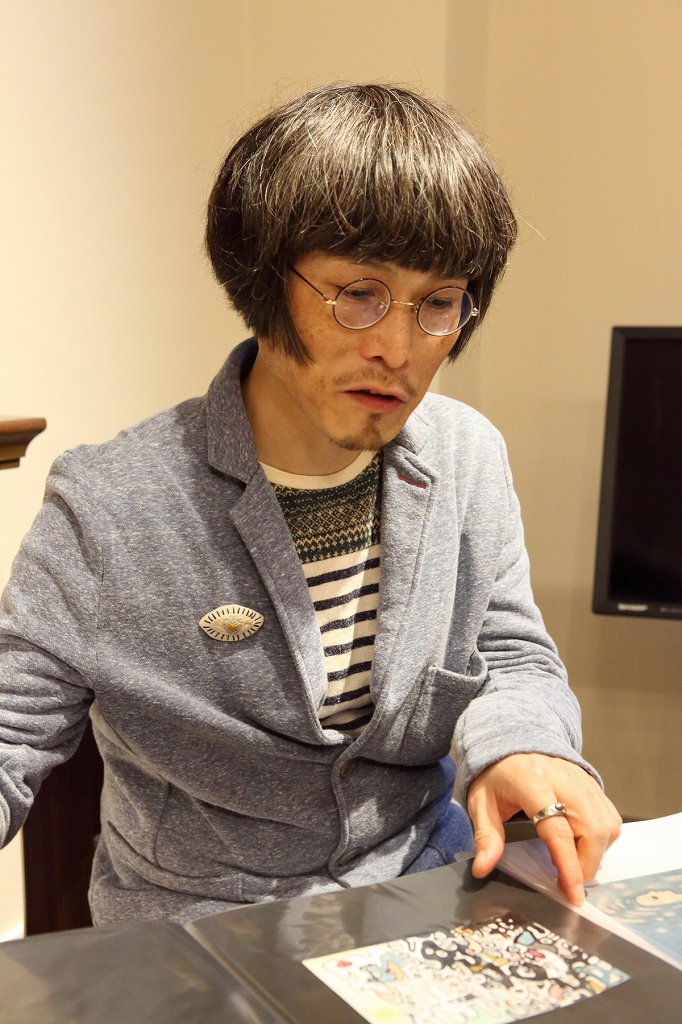
Mr Honda Seiji is a graduate of Hokkaido University’s School of Fisheries Sciences
It is said artists find a special appeal in the motif of the model barn’s wood sculpture of a cow. For example, a large graphic of the cow sculpture is featured on the tour tote bag, which was designed by the artist Ms Midori Kanbara.
Ms Kanbara comments, “I was looking for a design which would fascinate the viewer, to inspire them to visit No. 2 Farm through an interesting picture. Something they would want in their own room. And an experience which would motivate people to visit.” Ms Kanbara is not only an artist, but also a designer of advertisements and books, who also makes accessories. As such, she is always mindful of how her works are received by their audiences.
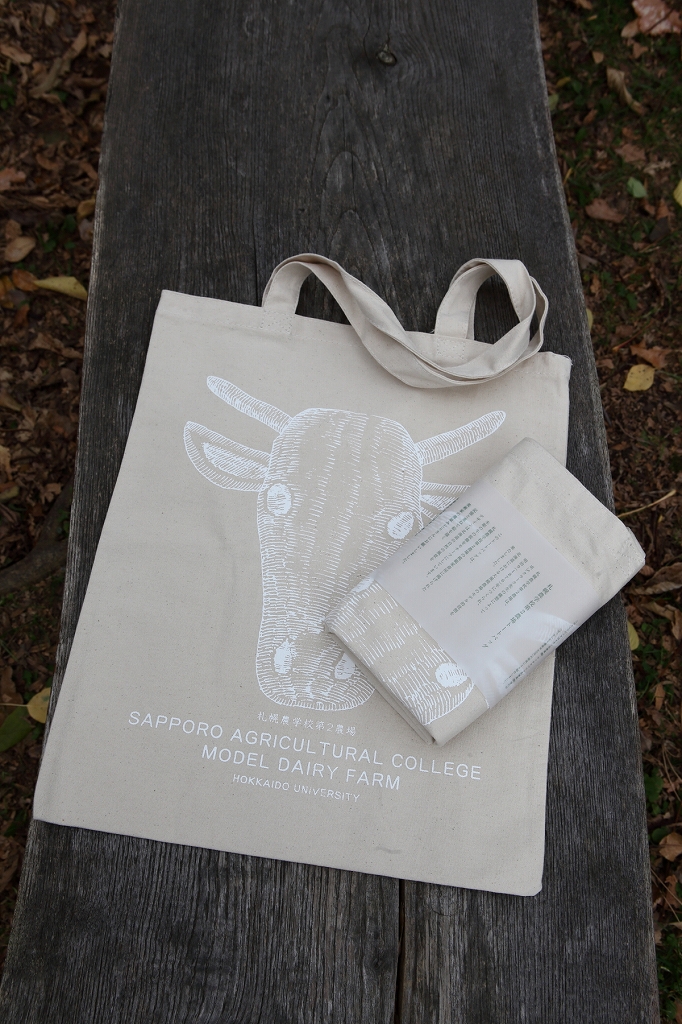
The tote bag distributed to guided tour participants
If Mr Honda does the colors, we could say that Ms Kanbara does the lines. Drawing the delicate touches of natural landscapes, she rarely uses color at all. However, as you look carefully, her works mysteriously evoke a sense of texture and color.
How was this style created? “I adore specimens - plant, fossil, or mineral. This obsession often takes me to Hokkaido University Museum, where I always receive a new inspiration.”
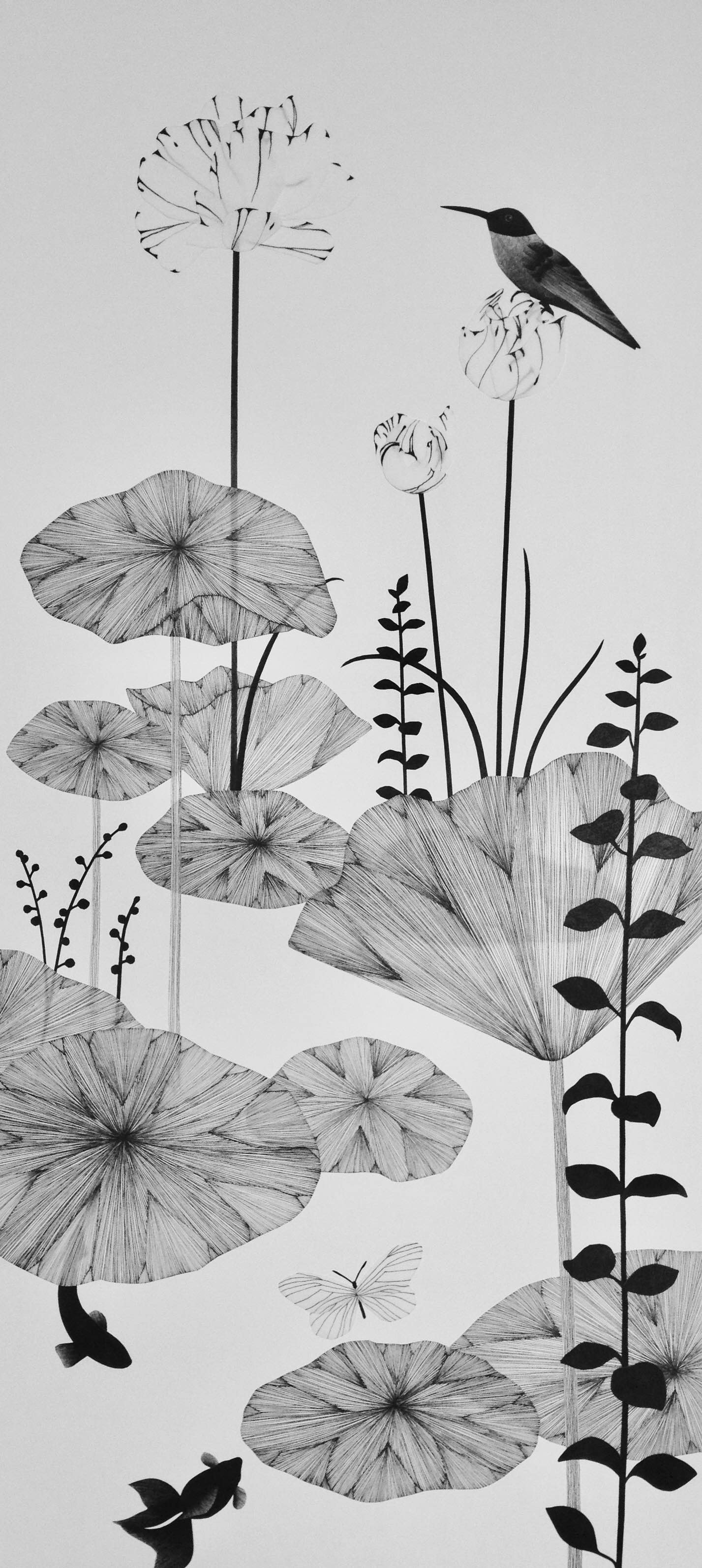
‘otogi no kuni’, in paper and pen, on wood panel
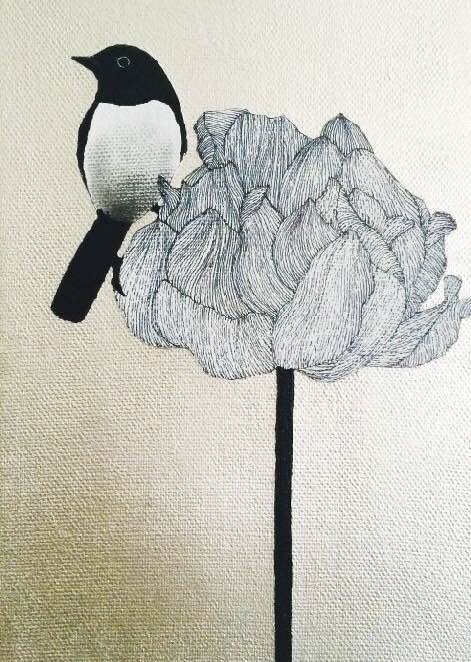
‘small garden’, in oil paint and silver leaf, on canvas
This oil painting is steeped in a profound sense of calm.
As for why she decided to print the cow sculpture design on silk screen, Ms Kanbara comments, “To represent the history of No. 2 Farm, I selected a method which brings out the blurring of ink and the sensation of drawing by hand. I did this to best convey the wooden architecture and texture of No. 2 Farm.”
I received a copy of ‘Kanbara’s Handmade Specimens’, a collection of Ms Kanbara’s treasured memories. Using it day to day will surely provide new discoveries about the value and beauty of No. 2 Farm. Ms Kanbara remarks, “The true joy of museums is bringing things from different times and places within easy reach of the visitor. Through art and products, I want to share this joy with as many people as possible.”
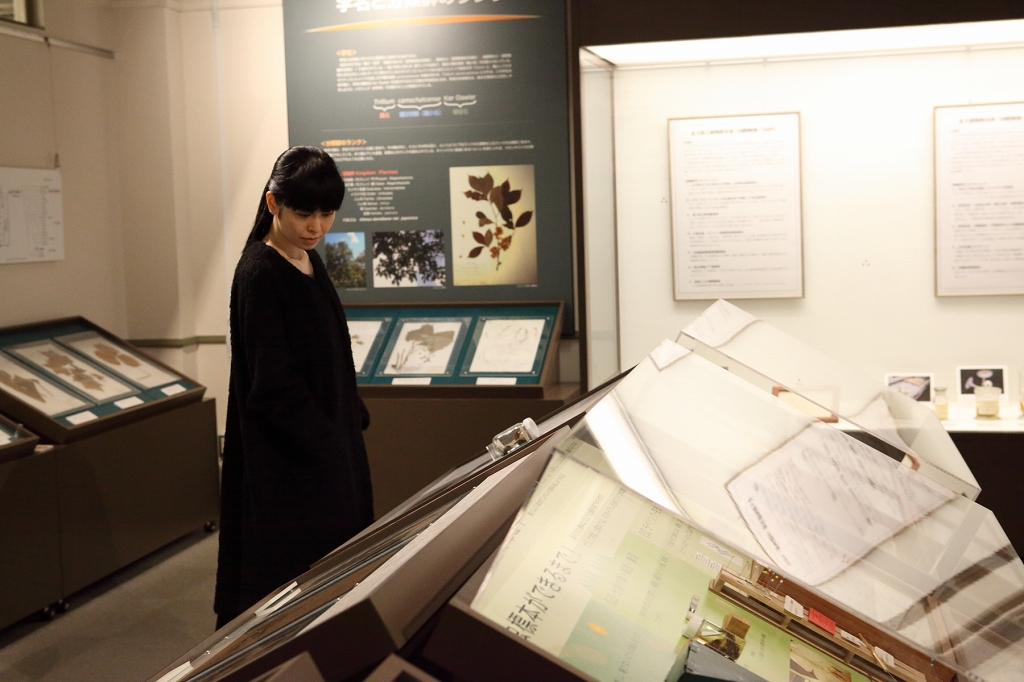
The museum’s specimen room was a source of inspiration to Ms Kanbara
This is a veritable treasure trove of the universal appeal of No. 2 Farm, as seen by two artists. We look forward to seeing how the presence of these artists will influence No. 2 Farm and the museum.
The Hokkaido University Museum 
Kita 10-jo, Nishi 8-chome, Kita-ku, Sapporo, Hokkaido
TEL: 011-706-2658
Open: 10:00-17:00(On Fridays, June-October 10:00-21:00)
Close: Mondays (Open on holidays, closed the following weekday), September 4, December 28- January 4, January 14-15, February 25, March 12
Web Site